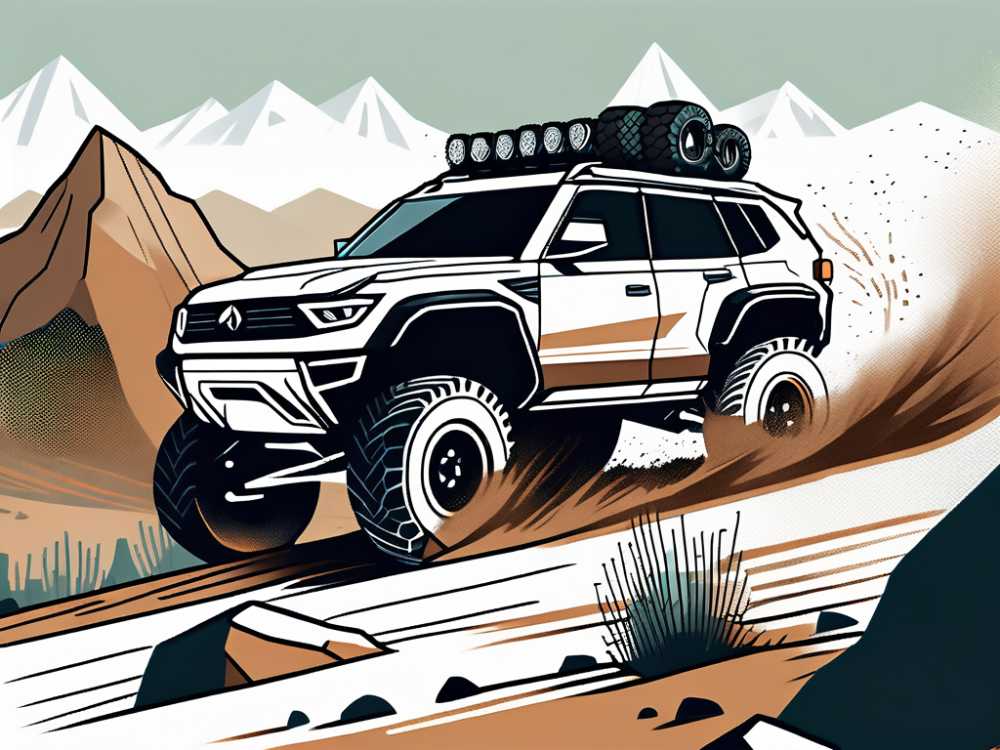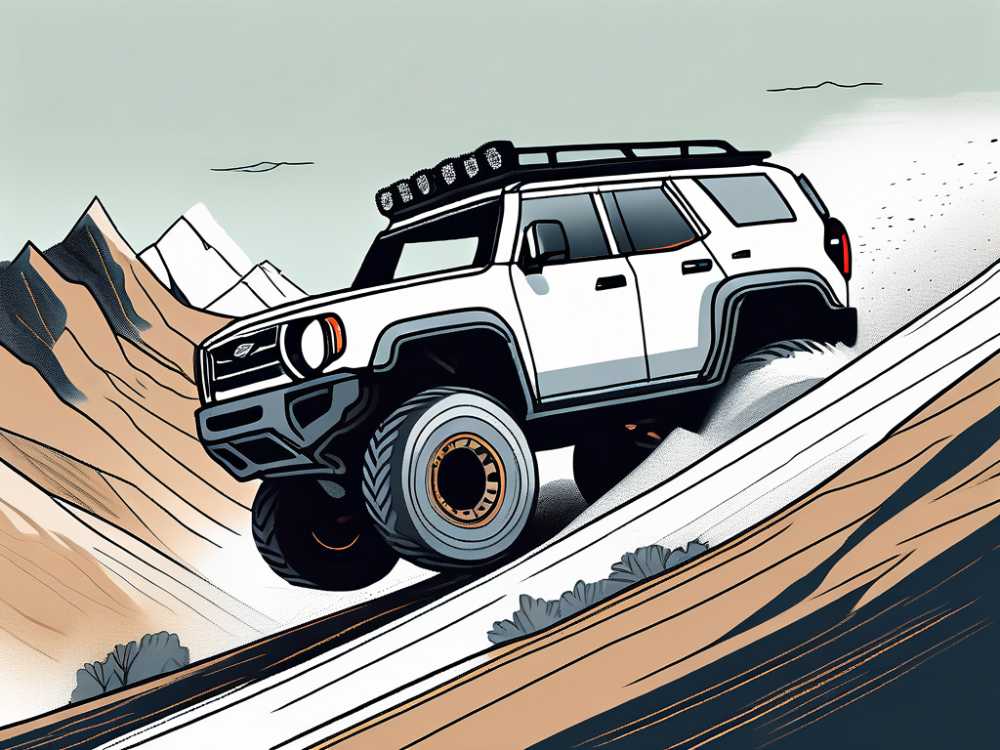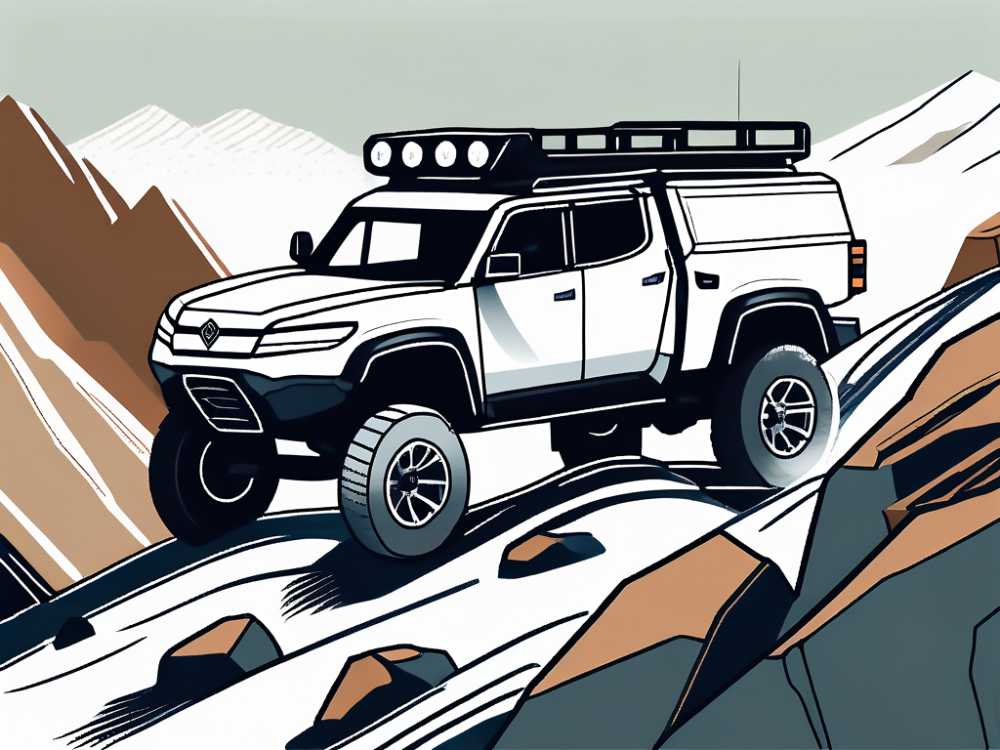If you're an enthusiast or someone curious about off-roading, understanding the intricate dynamics of off-road performance can open up a thrilling world of adventure. Whether you aim to tackle rugged landscapes or enjoy smooth trails, mastering the fundamentals will significantly enhance your driving experience.
Understanding Off-Road Performance
Off-road performance refers to how well a vehicle can handle various challenging driving conditions. This encompasses factors such as traction, stability, and overall handling when navigating unpaved paths, rocks, mud, and other obstacles.
The Basics of Off-Road Driving
Before diving into the complexities of off-roading, it's crucial to grasp the basic principles. Off-road driving differs markedly from traditional road driving, necessitating a more attentive approach to vehicle handling and situational awareness. Drivers must learn to interpret terrain features, like steep gradients or loose gravel, and adjust their driving techniques accordingly.
One of the fundamental techniques involves recognizing the importance of vehicle momentum. Maintaining a steady pace can help prevent the vehicle from getting stuck in challenging conditions, whereas sudden stops can sometimes lead to trouble. Additionally, understanding the vehicle's weight distribution and how it shifts during maneuvers can significantly impact performance. For instance, when traversing a steep incline, shifting weight to the rear wheels can enhance traction, allowing for a smoother ascent.
Key Factors Affecting Off-Road Performance
Several factors impact off-road performance, including tire design, drivetrain type, and ground clearance. Understanding how each component plays a role can elevate your off-roading skills.
- Tires: The type of tire isn't just about aesthetics; it affects traction and handling on uneven surfaces. Off-road tires often feature deeper treads and reinforced sidewalls to withstand harsh conditions.
- Drivetrain: Vehicles equipped with four-wheel drive typically offer better performance than those with two-wheel drive. The ability to distribute power to all four wheels enhances stability and control, especially in slippery or rugged environments.
- Ground Clearance: Higher clearance allows vehicles to navigate over obstacles without damaging the undercarriage. This is particularly vital in rocky terrains, where a low-slung vehicle may become stuck or suffer damage.
In addition to these factors, the vehicle's suspension system plays a crucial role in off-road capabilities. A well-designed suspension can absorb shocks from uneven terrain, providing a smoother ride and better control. Adjustable suspensions, which allow drivers to modify the vehicle's height and stiffness, can be particularly advantageous when transitioning between different types of terrain. Furthermore, understanding the role of weight in off-roading cannot be overlooked; lighter vehicles may perform better in certain conditions, while heavier vehicles can provide more stability in others.
Essential Skills for Off-Road Driving
Developing proper driving techniques is central to becoming a proficient off-road driver. Not only do these skills enhance your experience, but they also play a critical role in safety and vehicle preservation.
Navigating Different Types of Terrain
Each type of terrain poses unique challenges. Sand, mud, rocks, and snow all require different approaches. For instance, driving in sand necessitates lowering tire pressure to increase the contact patch and prevent sinking, while rocky terrains often require precise wheel placement and careful throttle control.
It's valuable to practice gradually on various terrains to build a diverse skill set, which can prepare you for unexpected changes in conditions during off-road expeditions. Additionally, understanding the weather conditions and how they affect the terrain is crucial. For example, rain can transform a solid dirt path into a slippery mudslide, while dry conditions can make sand more compact and easier to navigate. Familiarizing yourself with seasonal changes in your favorite off-road locations can give you a significant advantage when planning your trips.
Mastering Vehicle Control and Balance
Vehicle control becomes paramount during off-road adventures. Incorporating techniques like throttle modulation and brake control can help maintain traction and balance.
Moreover, understanding how weight distribution affects stability can significantly improve your driving skills. Leaning too far to one side can cause a roll-over, so mastering the balance of the vehicle is essential. It's also important to familiarize yourself with your vehicle's specific capabilities and limitations, including its center of gravity and suspension system. This knowledge allows you to make informed decisions when tackling steep inclines or declines, ensuring that you can navigate challenging situations without compromising safety. Furthermore, practicing recovery techniques, such as using winches or traction boards, can prepare you for emergencies, making you a more confident and capable off-road driver.
Upgrading Your Vehicle for Optimal Off-Road Performance
Sometimes, simply mastering techniques isn’t enough; enhancing your vehicle is crucial to ensure optimal performance. Careful modifications can elevate your capabilities on challenging terrains while keeping you safe.
Choosing the Right Tires for Off-Roading
A key upgrade for any off-roading vehicle is the tires. Off-road tires feature deeper treads and are designed to offer better traction in varying conditions. Depending on the environment, you might opt for specific tire designs, like all-terrain or mud-terrain tires, to optimize performance.
Always consider the typical terrain you'll be navigating. Researching and selecting tires suited for your specific needs can vastly improve your driving experience. For instance, if you frequently traverse rocky paths, tires with reinforced sidewalls can prevent punctures and provide added durability. Additionally, tire pressure can be adjusted according to the terrain; lowering it can increase the tire's footprint, enhancing grip on soft surfaces like sand or mud.
The Importance of Suspension and Ground Clearance
The vehicle's suspension system and ground clearance dictate how well it can absorb shocks and navigate obstacles. A good suspension system not only improves comfort but also ensures that the tires maintain contact with the ground, essential for traction.
Investing in high-quality lift kits can also enhance ground clearance, helping you successfully conquer rocks or deep ruts without damaging the vehicle. Knowledge in these areas can significantly impact both performance and safety. Furthermore, consider upgrading to adjustable shocks that allow you to fine-tune your suspension settings based on the terrain. This adaptability can make a world of difference when transitioning from rocky trails to smooth highways, ensuring a balanced ride no matter where your adventures take you.
Enhancing Engine Performance
Another critical aspect of upgrading your vehicle for off-road adventures is enhancing engine performance. A more powerful engine can provide the necessary torque to navigate steep inclines and rugged landscapes. Upgrades such as cold air intakes or performance exhaust systems can improve airflow, leading to better combustion and increased horsepower.
Moreover, tuning your engine's computer can optimize fuel efficiency and throttle response, making your vehicle more responsive to your commands. These enhancements not only improve your vehicle's off-road capabilities but also contribute to a more exhilarating driving experience, allowing you to tackle challenging terrains with confidence and ease.
Safety Measures for Off-Road Driving
While the thrill of off-roading is exhilarating, safety should always be a priority. Being prepared can make a significant difference when encountering unforeseen challenges.
Preparing for Unexpected Situations
Before heading out for an off-road adventure, ensure you prepare for potential issues. This can include conducting a thorough vehicle inspection, preparing an emergency kit, and ensuring you have enough fuel for the journey.
Additionally, familiarizing yourself with the area you're exploring—such as assessing the weather and understanding emergency protocols—can boost your confidence and readiness for potential challenges that arise. It’s also wise to share your itinerary with a friend or family member, providing them with details about your route and expected return time. This way, someone will know where to look if you encounter difficulties and fail to return as planned.
Essential Off-Road Safety Gear
Equipping yourself with the right safety gear can significantly enhance your off-road experience. Essential items include:
- First Aid Kits: Always carry a well-stocked first aid kit to handle minor injuries.
- Tool Kits: Be prepared for mechanical issues with a reliable tool kit.
- Navigation Devices: GPS devices or offline maps can be invaluable in remote areas.
In addition to these essentials, consider investing in a high-quality winch. A winch can be a lifesaver if you find yourself stuck in mud or sand, allowing you to pull your vehicle free without external assistance. Furthermore, a fire extinguisher is a critical piece of safety equipment that should never be overlooked, especially when traversing dry or wooded areas where the risk of fire is heightened. By prioritizing safety through preparedness and appropriate gear, you can confidently enjoy your off-road adventures.
Advanced Off-Road Techniques
As you grow comfortable with the basics, developing advanced techniques can further enhance your skills and overall experience while off-roading.
Conquering Steep Slopes and Rough Terrain
Steep slopes can be intimidating, but learning how to tackle them effectively is essential. Key techniques involve maintaining momentum and proper positioning. Descending a steep hill requires a low gear and minimal braking to prevent skidding, while ascending might necessitate gearing down to maintain traction.
Driving Through Water and Mud
Water crossings and muddy patches are common obstacles in off-roading. The first step is assessing the depth and current of the water; never attempt a crossing if unsure. Use momentum and the right gear to navigate through without excessive wheel spin, which can cause you to get stuck.
Practicing these advanced techniques will not only boost your confidence but also expand your skill set, allowing you to explore more challenging environments.
In conclusion, off-roading is a unique adventure that combines vehicle skills, preparedness, and a passion for exploration. By understanding the fundamentals, refining techniques, upgrading your vehicle, and prioritizing safety, you'll be well on your way to mastering the terrain like a pro.















